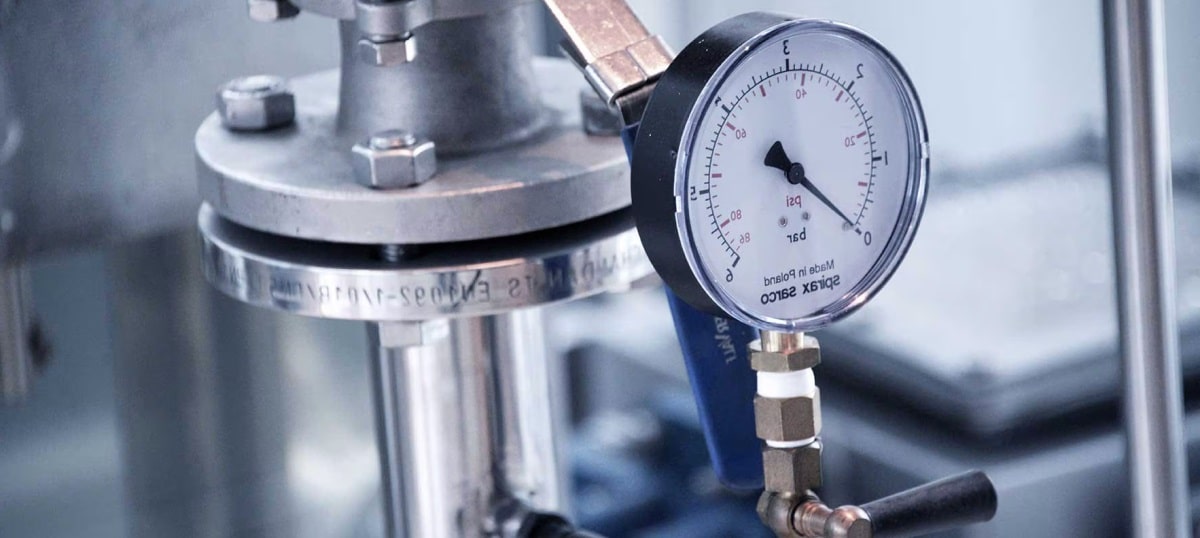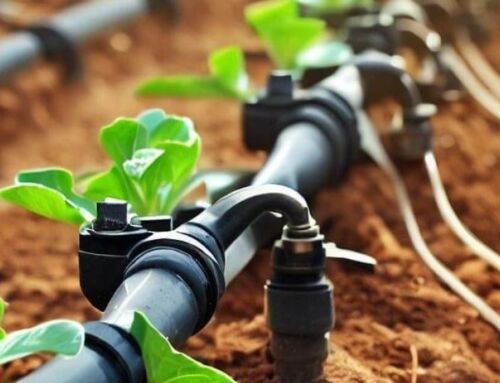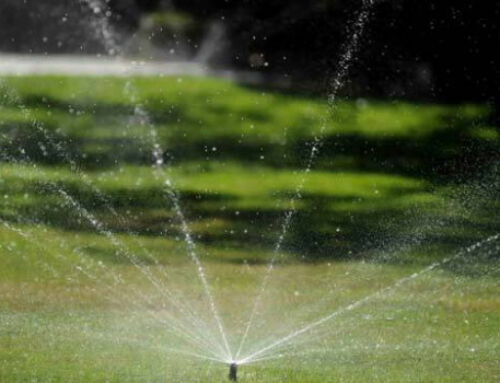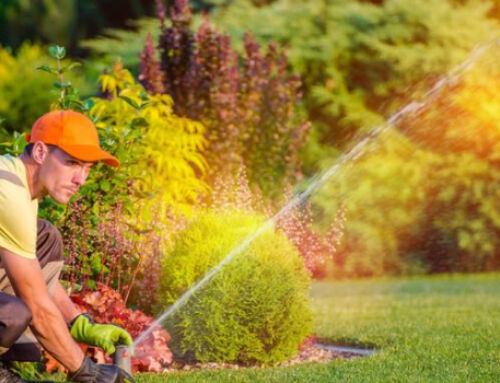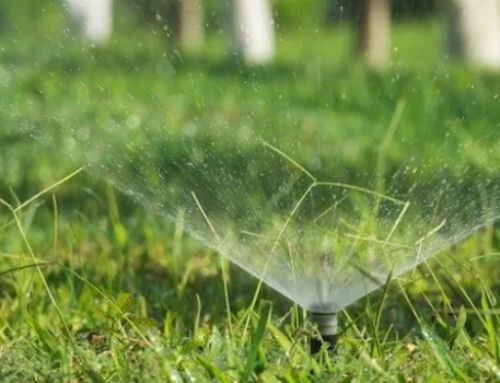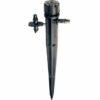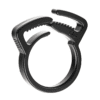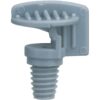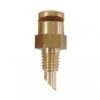In this guide, we’ll break down the relationship between pipe diameter, pressure, and flow.
These interconnected factors play a crucial role in ensuring efficient and reliable water distribution.
Whatever your water demands, striking the right balance between pipe diameter and pressure is paramount. Too much pressure can strain your infrastructure and lead to wasteful water usage, while insufficient pressure can result in inadequate water delivery and subpar results in settings from commercial irrigation to the family backyard.
Read on as we delve deeper into the intricate relationship between pipe diameter, pressure, and flow in Melbourne’s water systems. From the factors influencing pipe sizing to the methods for optimising pressure management, we’ll explore how these elements come together to ensure a reliable and sustainable water supply for all.
Let’s dive in.
MALVERN IRRIGATION TIPS:
|
What is the relationship between diameter, pressure and flow?
Pipe diameter refers to the width of the pipe. It’s a fundamental aspect of any plumbing system, determining the volume of water that can pass through. A larger diameter allows for greater flow rates, reducing the likelihood of pressure drops and ensuring adequate water supply to consumers.
Pressure represents the force exerted by the water against the walls of the pipe. It’s what keeps the water flowing from the source to its destination, whether it’s a household tap or an industrial facility.
Maintaining optimal pressure levels is essential for preventing leaks, bursts, and other potential issues within the pipeline network.
Navigating the Choices: Pipe Diameter and Pressure
When it comes to designing and managing water systems in Melbourne, engineers have two primary levers to adjust: pipe diameter and pressure.
Each option comes with its own set of advantages and disadvantages, offering different approaches to achieve optimal performance.
Option 1: Adjusting Pipe Diameter
| Pros | Cons |
|---|---|
| ✓ Greater Flow Capacity: Enlarging pipe diameter allows for increased water flow, ensuring sufficient supply even during peak demand periods. | ✗ Higher Initial Costs: Installing larger pipes typically requires more materials and labour, leading to higher upfront expenses. |
| ✓ Reduced Friction Losses: Larger pipes experience less friction, resulting in lower energy consumption and maintenance costs over time. | ✗ Space Limitations: In dense urban areas, expanding pipe diameter may be constrained by limited space, posing logistical challenges for implementation. |
| ✓ Future-Proofing: Oversizing pipes can accommodate potential growth in water demand, minimising the need for costly infrastructure upgrades in the future. | ✗ Potential for Oversizing: Incorrectly sizing pipes can lead to inefficiencies and wasted resources, especially if future demand projections are overestimated. |
Option 2: Managing Pressure
| Pros | Cons |
|---|---|
| ✓ Precision Control: Adjusting pressure levels allows for fine-tuning of water distribution, ensuring optimal flow rates without overburdening the system. | ✗ Complexity of Regulation: Balancing pressure across a network requires sophisticated control systems and ongoing monitoring, adding complexity to maintenance efforts. |
| ✓ Energy Efficiency: Lowering pressure reduces energy consumption associated with pumping water, resulting in cost savings and environmental benefits. | ✗ Potential for Underperformance: Inadequate pressure management can lead to reduced water flow and customer dissatisfaction,necessitating careful calibration to meet demand. |
| ✓ Mitigation of Leakage: Maintaining appropriate pressure levels helps minimise the risk of leaks and bursts, preserving the integrity of the pipeline network. | ✗ Limited Scope: While pressure adjustments can optimise performance within existing infrastructure, they may not address underlying issues related to pipe capacity and distribution. |
Whether prioritising flow capacity or pressure management, thoughtful planning and proactive maintenance are essential for ensuring a reliable and sustainable water supply for generations to come.
Effect Of Pipe Diameter On Flow Rate
The effect of pipe diameter on flow rate is a fundamental aspect of fluid dynamics and plays a crucial role in determining the efficiency and effectiveness of water distribution systems.
Here’s a closer look at how pipe diameter influences flow rate.
Relationship between Diameter and Flow Velocity
- According to the principles of fluid mechanics, as the diameter of a pipe increases, the flow velocity of the fluid decreases. This is due to the conservation of mass, where the same volume of fluid must pass through every section of the pipe per unit time.
- Larger pipe diameters provide more cross-sectional area for the flow of water, allowing for lower flow velocities. This reduction in velocity helps minimise friction losses and pressure drops along the pipeline.
Impact on Flow Capacity
- The flow capacity of a pipe, often measured in terms of gallons per minute (GPM) or litres per second (LPS), is directly influenced by its diameter. Larger-diameter pipes have a higher flow capacity compared to smaller ones, as they can accommodate more water passing through at any given time.
- Increasing the diameter of a pipe can significantly increase its flow capacity, allowing for greater volumes of water to be transported with minimal resistance.
Effects of Friction Losses
- Friction losses occur when water flows through a pipe, causing energy loss due to the interaction between the water and the pipe walls. The magnitude of friction losses is inversely proportional to the diameter of the pipe.
- Larger diameter pipes experience lower friction losses compared to smaller ones, as the relative surface area in contact with the flowing water is reduced. This results in less energy consumption and more efficient water distribution.
Considerations for Design and Maintenance
- When designing or upgrading water distribution systems, engineers must carefully consider the appropriate pipe diameter to meet flow rate requirements while minimising friction losses and pressure drops.
- Additionally, proper maintenance of pipes, including regular cleaning and inspection, is essential for preserving flow capacity and preventing blockages that can impede water flow.
Effect Of Pipe Diameter On Pressure
The effect of pipe diameter on pressure is a crucial consideration in fluid dynamics, particularly in water distribution systems where maintaining optimal pressure levels is essential for reliable operation.
Here’s how pipe diameter influences pressure.
Pressure Drop and Flow Resistance
- Pressure drop occurs as water flows through a pipe due to frictional resistance between the water and the inner surface of the pipe. This pressure drop is influenced by various factors, including pipe diameter.
- Smaller diameter pipes result in higher flow velocities, leading to greater frictional losses and consequently, a more significant pressure drop along the length of the pipe. Conversely, larger diameter pipes experience lower flow velocities and reduced frictional losses, resulting in less pressure drop.
Relationship between Diameter and Flow Velocity
- The diameter of a pipe directly affects the flow velocity of the water passing through it. According to the principle of continuity, the flow rate (volume of water passing through per unit of time) must remain constant throughout a pipe, regardless of its diameter.
- As the diameter of a pipe increases, the flow velocity decreases. This reduction in velocity corresponds to lower kinetic energy losses and, therefore, lower pressure drop along the length of the pipe.
Pressure Distribution and System Efficiency
- Properly sizing pipe diameter is crucial for maintaining adequate pressure levels throughout a water distribution system. Oversized pipes can result in excessively low pressures, leading to inadequate water flow and customer dissatisfaction.
- Conversely, undersized pipes can cause pressure to drop significantly due to flow restrictions, resulting in reduced water delivery capacity and potential damage to the infrastructure.
Balancing Pressure and Flow Requirements
- Engineers must strike a balance between pressure requirements and flow capacity when designing water distribution systems. Selecting the appropriate pipe diameter ensures that pressure remains within acceptable limits while providing sufficient flow rates to meet demand.
- Additionally, pressure regulation devices such as valves and pumps may be used to adjust pressure levels as needed, particularly in areas with varying elevation or demand patterns.
Effect Of Pressure On Flow Rate
The effect of pressure on flow rate is a fundamental principle in fluid dynamics, particularly in the context of water distribution systems where maintaining appropriate pressure levels is essential for ensuring reliable and efficient operation.
Here’s how pressure influences flow rate.
Pressure Gradients and Flow Direction
- Pressure gradients, or differences in pressure along a pipeline, drive the flow of water from regions of higher pressure to those of lower pressure. The greater the pressure difference, the higher the flow rate of water.
- In water distribution systems, pumps or other pressure-regulating devices are often used to maintain adequate pressure levels throughout the network, ensuring a continuous and reliable flow of water to consumers.
Relationship between Pressure and Velocity
- According to Bernoulli’s principle, there is an inverse relationship between pressure and velocity in a fluid. As pressure increases, velocity decreases, and vice versa, provided there are no changes in elevation or energy input.
- Higher pressure levels within a pipe correspond to lower flow velocities, as the energy associated with pressure is converted into kinetic energy, resulting in slower flow rates.
Impact on Flow Capacity
- Pressure directly influences the flow capacity of a pipe by determining the rate at which water can be pushed through the system. Higher pressure levels result in greater flow rates, allowing for more water to be delivered within a given timeframe.
- Conversely, lower pressure levels restrict flow rates, potentially leading to inadequate water delivery and customer dissatisfaction.
Control and Regulation of Flow
- Pressure plays a crucial role in controlling and regulating flow within a water distribution system. By adjusting pressure levels using valves, pumps, or pressure-reducing devices, operators can optimise flow rates to meet varying demand conditions.
- Proper pressure management ensures that flow rates remain within acceptable limits, preventing issues such as water hammer, pipe bursts, or inefficient water distribution.
Comparing Your Options: Pipe Diameter vs. Pressure Management
| Comparison Factor | Pipe Diameter | Pressure Management |
|---|---|---|
| Efficiency | – High flow capacity | – Precision control of water distribution |
| – Reduced friction losses | – Lower energy consumption | |
| Cost | – Higher initial installation costs | – Potentially lower upfront expenses |
| – Potential for future-proofing | – Ongoing maintenance and monitoring costs | |
| Durability and Lifespan | – Dependable long-term performance | – Requires sophisticated control systems |
| – Minimal risk of leakage and bursts | – Regular calibration and adjustments | |
| Aesthetics | – Limited impact on visual aesthetics | – No visible changes to infrastructure |
| – May require larger above-ground fixtures | – Minimal disruption to existing layout | |
| Environmental Impact | – Potential for material waste if oversized | – Lower energy consumption reduces carbon footprint |
| – Resource-intensive during installation | – Helps mitigate water loss and environmental damage |
Contact Malvern Irrigation Supplies to Support Your Next Project
Whether you’re seeking expert advice, personalised recommendations, or a detailed quote, Malvern Irrigation Supplies is here to help.
With years of experience and a commitment to excellence, our team is dedicated to finding the perfect solution for your needs.
Contact us now to discover how we can assist you in achieving efficiency, sustainability, and peace of mind.


